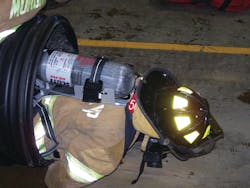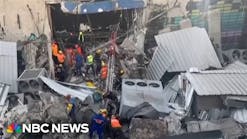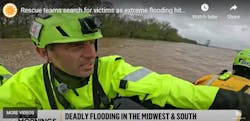May 8, 2010, Middletown, OH — A worker conducting a non-entry inspection of a manhole is incapacitated and falls into the hole. Moments later, two firefighters lower their captain into the hole to conduct the rescue. All three firefighters are overcome and nearly perish.
May 26, 2010 Liberty Township, IN — A worker is overcome and collapses in a 10-foot-deep pit. A civilian attempts the rescue, only to be overcome as well. Two firefighters arrive on the scene and attempt a rescue, but also are overcome. The original victim dies.
Sept. 6, 2010 Tarrytown, NY — A worker is incapacitated in a manhole and a rescue attempt is made by a firefighter. Both the victim and the rescuer die from exposures in the confined space.
What is the common denominator here? Failed rescue attempts. Letting emotions control your response to an emergency is dangerous and many times deadly. Use your skills and talents to find a solution and not become a part of the problem. I know it is easier said than done, but not entering a confined space to do a rescue may be the smartest decision. After all, if you go down, who will rescue you?
I am a lieutenant firefighter with more than 27 years of experience. My service is not only in firefighting, but also in technical rescue. I am also a member of a State Urban Search and Rescue (SUSAR) team with cross training in confined-space, trench, high-angle, structural-collapse and swiftwater rescue. Technical rescue training takes time above and beyond the usual fire service training requirements, typically 40 hours each for the technician level, and some firefighters may be deterred by the extra time commitment. The public persona of firefighters is that we can help them. This can lead to devastating results. Firefighters will almost always attempt to do a rescue even if it is beyond their level of training.
In every confined-space rescue, some common denominators should be established. Air monitoring, fall protection for rescuers, retrieval methods, traffic and any other hazards of the space that could be present should be identified and addressed prior to any entry. We must size-up the situation and identify hazards at confined spaces just as we do at vehicle accidents, structure fires or any other emergency.
Atmospheric hazards are invisible most times. This is not Hollywood and we don't have green clouds floating inside the space showing you "I am toxic, stay away!" Carbon monoxide (CO) alone is a huge problem, as it is colorless, tasteless, odorless and cannot be detected without the use of an air monitor. Oxygen deficiency can occur for many reasons and again is a colorless, tasteless and odorless hazard. Depending on the level, the effects of oxygen deficiency can be instant and incapacitate a person. The atmosphere of every confined space must be monitored before an entry is made, even if the trapped person is conscious and talking. Monitoring must be performed prior to and during entry for all rescues to ensure the confined space is not only safe to enter, but also safe to work in.
Most common atmospheric hazards in confined-space operations can be attributed to oxygen deficiency — carbon monoxide, hydrogen sulfide, and flammable atmospheres such as methane or natural gas. A simple blower can provide a fresh air supply into the confined space and "turn the air over" to assist in the control of the hazards. Atmospheric monitoring of confined spaces should never be dismissed, as the conditions can change instantly.
Many fire departments don't have the resources, abilities and financial backing to teach a 40-hour confined-space technician course, but awareness training is simple. In about two hours, anyone can be taught how to identify a confined space and determine the possible hazards of the space. At that point, responders should be able to identify a hazardous situation and know when to call for help. The bottom line is that awareness training should be a tool in the firefighter's bag of tricks. Awareness training is essential in today's fire service as we are called upon to perform at various types of rescues.
Next: What Can Go Wrong in Confined-Space Rescues
For more information on confined-space rescue operations, see http://www.firehouse.com/podcast/buzz-technical-rescue/buzz-technical-rescue-first-responders-and-confined-space-entry.
SCOTT GOODWIN is a lieutenant firefighter with the Ballville Township Fire Department in Fremont, OH, and a member of State Urban Search and Rescue (SUSAR) Region 1 for Northwest Ohio. He is a Certified Occupational Safety Specialist (COSS) and director of safety and training for Confined Space Training Services, offering confined-space entry training, rescue training and standby rescue services to the fire service and businesses using classroom and hands-on training with a mobile simulator. He can be contacted at 419-241-3601 or [email protected], or online at www.confinedspacetrainingservices.com.






